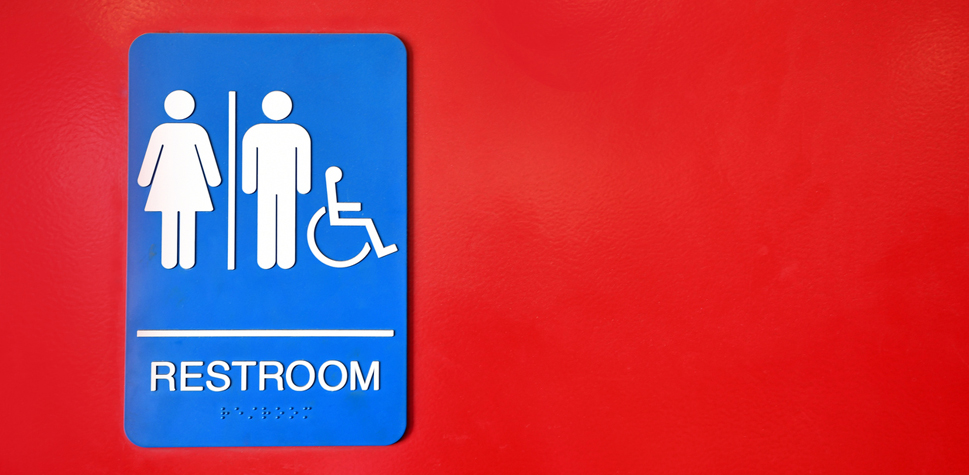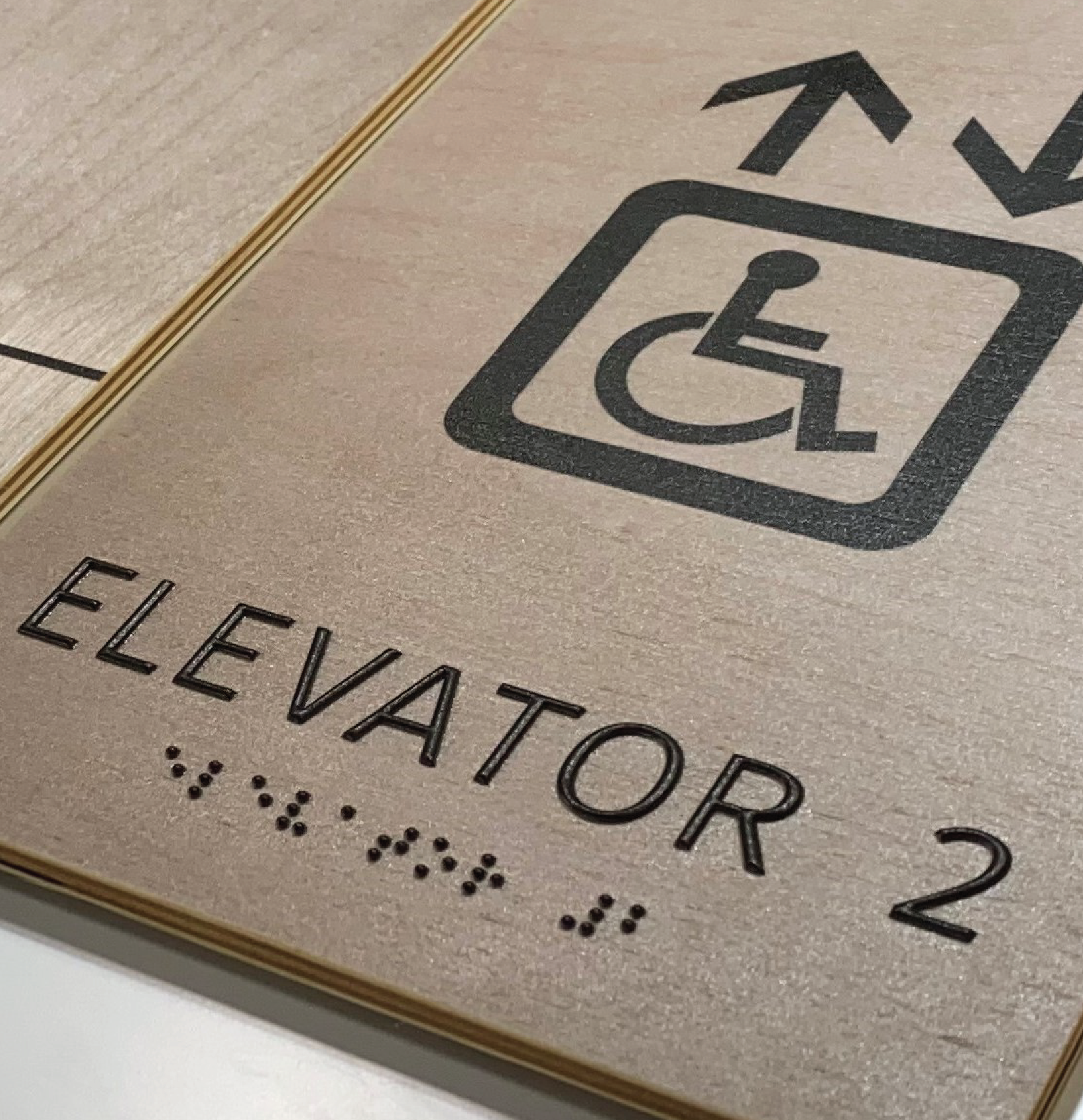Checking Out the Trick Attributes of ADA Signs for Enhanced Ease Of Access
In the realm of availability, ADA signs serve as silent yet powerful allies, ensuring that spaces are navigable and comprehensive for people with specials needs. By incorporating Braille and tactile aspects, these signs break barriers for the aesthetically impaired, while high-contrast color systems and legible fonts provide to varied visual demands.
Significance of ADA Compliance
Ensuring compliance with the Americans with Disabilities Act (ADA) is important for cultivating inclusivity and equal accessibility in public rooms and offices. The ADA, established in 1990, mandates that all public centers, companies, and transport solutions accommodate individuals with specials needs, guaranteeing they appreciate the very same civil liberties and opportunities as others. Conformity with ADA criteria not just satisfies legal commitments but additionally enhances a company's track record by demonstrating its dedication to variety and inclusivity.
Among the essential facets of ADA compliance is the application of obtainable signs. ADA signs are made to guarantee that individuals with handicaps can easily navigate through structures and areas. These indications need to comply with certain standards pertaining to size, typeface, color contrast, and placement to guarantee exposure and readability for all. Properly executed ADA signs aids remove barriers that people with disabilities frequently come across, therefore advertising their self-reliance and self-confidence (ADA Signs).
Additionally, sticking to ADA guidelines can mitigate the risk of possible penalties and lawful effects. Organizations that fail to conform with ADA guidelines may face penalties or suits, which can be both damaging and financially troublesome to their public picture. Hence, ADA conformity is important to cultivating an equitable atmosphere for everyone.
Braille and Tactile Aspects
The consolidation of Braille and tactile components into ADA signage embodies the principles of availability and inclusivity. These features are essential for people who are aesthetically damaged or blind, allowing them to browse public rooms with better independence and confidence. Braille, a responsive writing system, is vital in giving written information in a style that can be conveniently viewed via touch. It is typically put underneath the equivalent text on signs to guarantee that individuals can access the info without aesthetic support.
Responsive aspects extend beyond Braille and consist of elevated signs and personalities. These elements are made to be discernible by touch, enabling people to identify area numbers, bathrooms, exits, and various other vital areas. The ADA establishes particular guidelines concerning the dimension, spacing, and placement of these responsive aspects to maximize readability and make certain uniformity across different environments.

High-Contrast Color Design
High-contrast shade plans play a critical duty in enhancing the exposure and readability of ADA signage for people with visual problems. These systems are important as they take full advantage of the distinction in light reflectance between message and background, making certain that indications are conveniently discernible, also from a range. The Americans with Disabilities Act (ADA) mandates making use of details color contrasts to fit those with limited vision, making it an important aspect of compliance.
The efficacy of high-contrast shades depends on their capacity to stand apart in numerous illumination conditions, including poorly lit atmospheres and areas with glow. Generally, dark why not try these out message on a light history or light text on a dark background is utilized to accomplish optimal comparison. Black message on a yellow or white background supplies a plain visual difference that aids in quick recognition and understanding.

Legible Fonts and Text Size
When taking into consideration the layout of ADA signage, the selection of clear font styles and ideal text size can not be overemphasized. These aspects are essential for ensuring that indicators are obtainable to people with aesthetic impairments. The Americans with Disabilities Act (ADA) mandates that fonts must be sans-serif and not italic, oblique, manuscript, highly decorative, or of unusual kind. These requirements aid make certain that the text is easily readable from a range which the characters are appreciable to varied audiences.
According to ADA guidelines, the minimum message height should be 5/8 inch, and it should increase proportionally with seeing distance. Uniformity in message dimension contributes to a natural visual experience, assisting individuals in navigating environments successfully.
Furthermore, spacing between letters and lines is essential to clarity. Ample spacing avoids characters from appearing crowded, boosting readability. By sticking to these standards, designers can dramatically enhance accessibility, making certain that signage offers its desired objective for all people, no matter their visual abilities.
Efficient Placement Techniques
Strategic positioning of ADA signs is important for optimizing accessibility and making sure conformity with lawful requirements. Effectively located indicators guide individuals with specials needs properly, promoting navigating in public rooms. Secret factors to consider include distance, exposure, and height. ADA guidelines stipulate that signs need to be installed at an elevation between 48 to 60 inches from the ground to ensure they are within the line of view for both standing and seated individuals. This conventional height range is critical for inclusivity, enabling mobility device customers and individuals of varying elevations to accessibility details effortlessly.
In addition, signs have to be positioned surrounding to the latch side of doors to allow simple identification before entry. This placement read this post here assists people situate rooms and rooms without blockage. In cases where there is no door, indications must be located on the nearby adjacent wall surface. Consistency in sign placement throughout a facility enhances predictability, minimizing complication and boosting total user experience.

Final Thought
ADA indicators play an essential duty in advertising ease of access by incorporating features that attend to the demands of individuals with handicaps. These elements collectively foster a comprehensive setting, highlighting the importance of ADA conformity in ensuring equal accessibility for all.
In the world of accessibility, ADA indicators serve as quiet yet powerful allies, ensuring that areas are comprehensive and accessible for people with disabilities. The ADA, established in 1990, mandates that all public centers, companies, and transport services fit people with impairments, ensuring they appreciate the exact same legal rights and chances as others. ADA Signs. ADA indicators are developed to make sure that individuals with handicaps can conveniently navigate through buildings and spaces. ADA standards state that indications ought to be mounted at an elevation between 48 to 60 inches from the ground to ensure they are within the line of view for both standing and seated individuals.ADA indicators play a vital function in promoting accessibility by integrating features that deal with the needs of people with disabilities